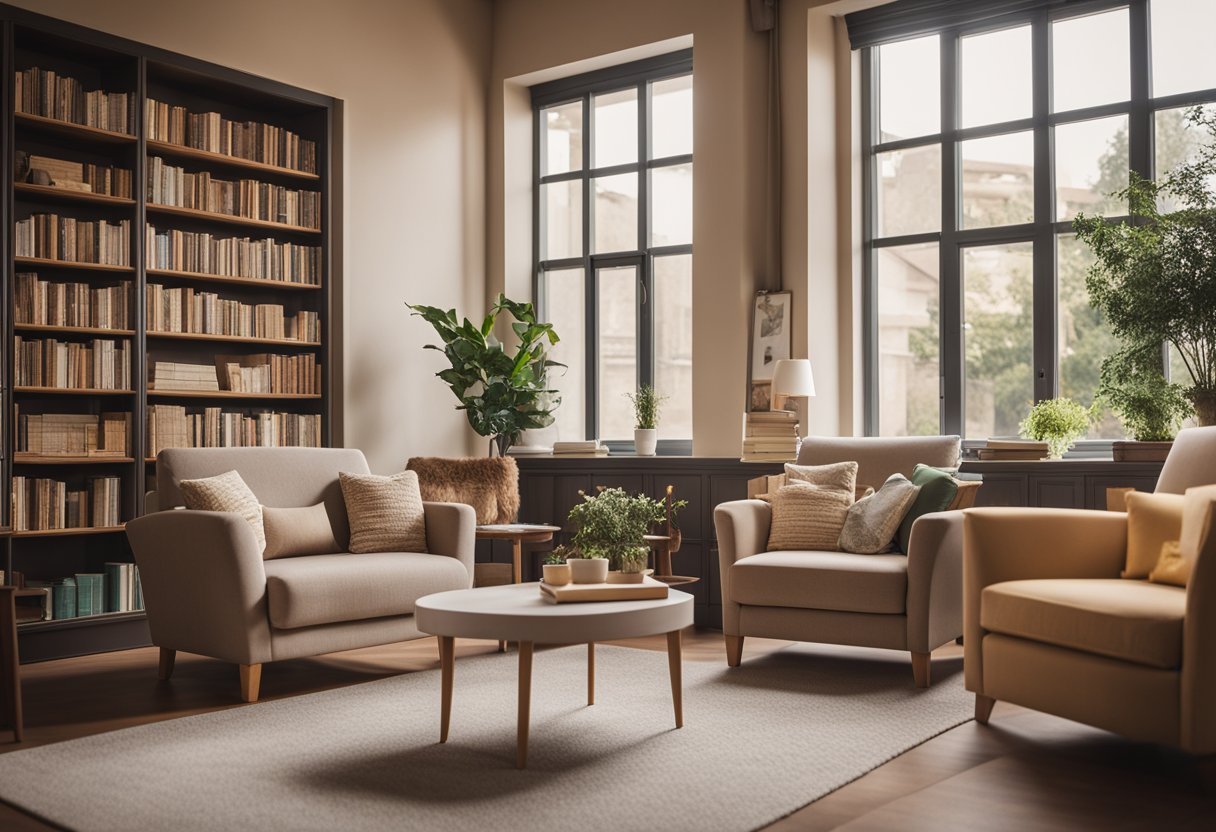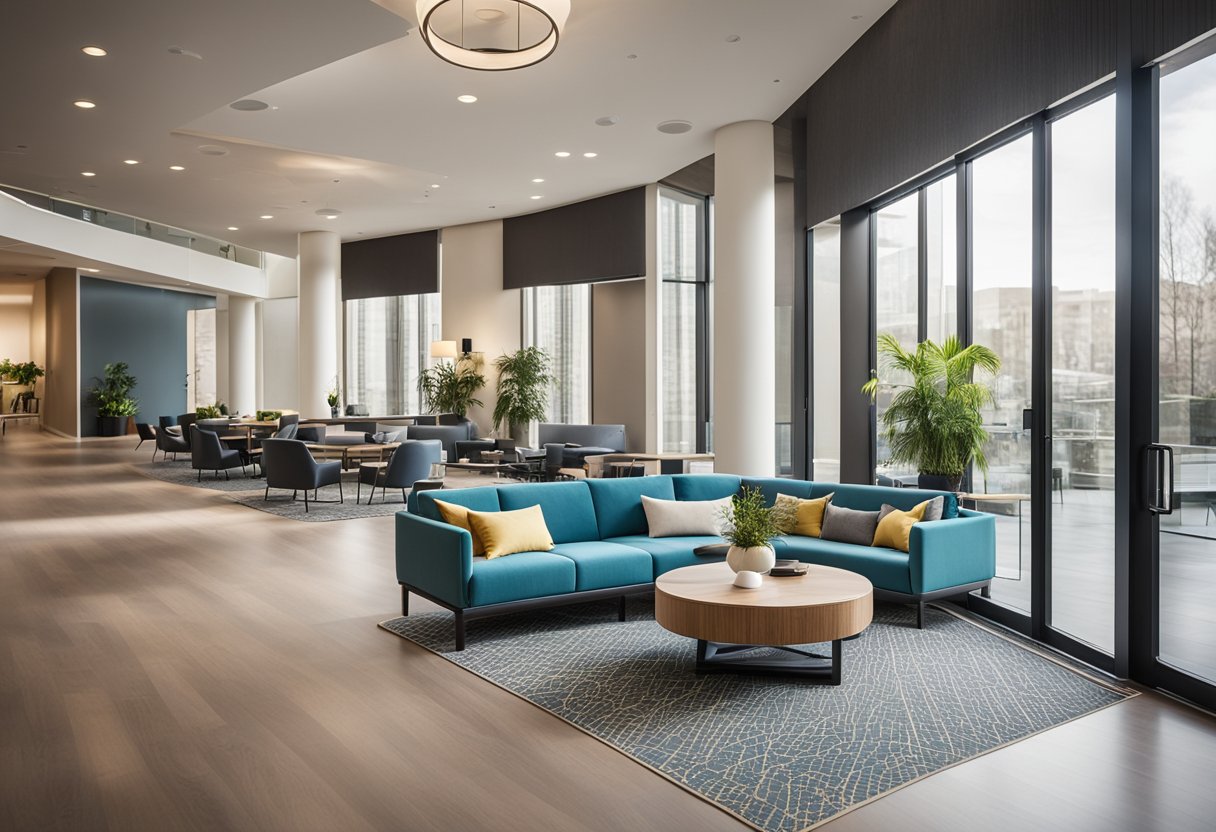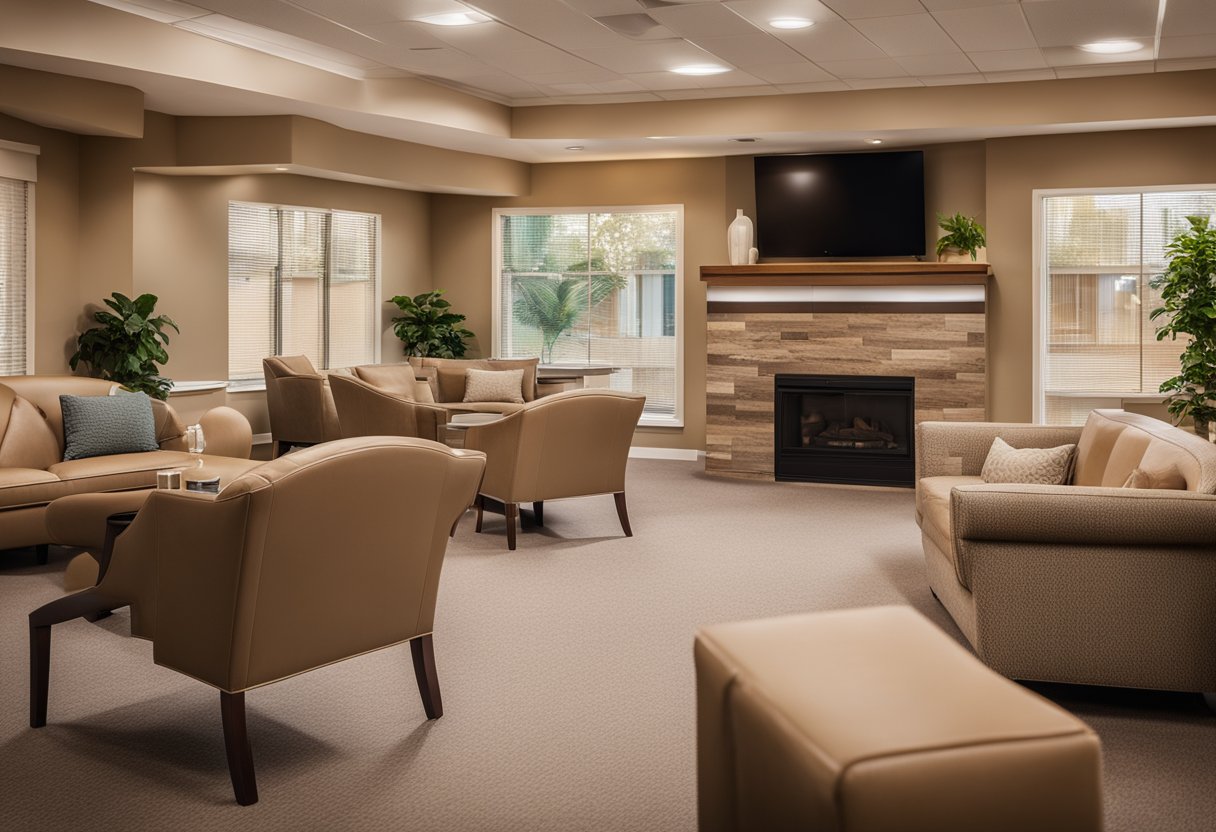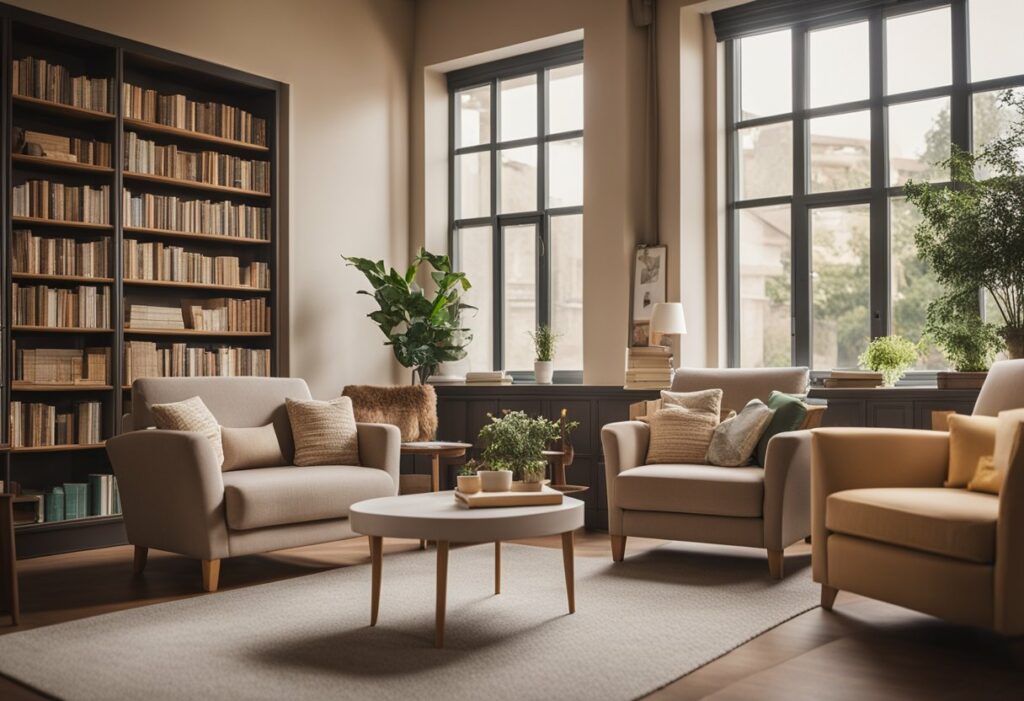Nursing Home Interior Design: Creating Comfortable and Inviting Spaces
Nursing home interior design plays a crucial role in creating a comfortable and safe environment for residents. The design of a nursing home should be cheerful and inviting, with bright colors, natural light, and warm textures to help residents feel at home. Additionally, ergonomic furniture and wheelchair-friendly areas should be included to ensure that residents can move around safely and comfortably.

When it comes to nursing home interior design, there are several essential elements that must be considered. The architect and interior designer must have a thorough understanding of the nursing home’s mission and its patient profile. It is especially important that the design address aging and its accompanying physical and mental disabilities, including loss of visual acuity. The design must also take into account the need for privacy and personal space, as well as the importance of creating a sense of community and social interaction among residents.
In this article, we will explore the essentials of nursing home interior design, including design elements and considerations. We will also answer some frequently asked questions about nursing home interior design to help you create a safe, comfortable, and inviting environment for your residents.
Key Takeaways
- Nursing home interior design should be cheerful, inviting, and include ergonomic furniture and wheelchair-friendly areas.
- Design elements should address aging and its accompanying physical and mental disabilities, as well as the need for privacy and personal space.
- Creating a sense of community and social interaction among residents is also important in nursing home interior design.
Essentials of Nursing Home Interior Design

As you plan the interior design of a nursing home, it is essential to keep in mind the comfort, safety, and well-being of the residents. Here are some key elements to consider:
Maximising Comfort and Independence
The design of a nursing home should prioritize the comfort and independence of the residents. This includes ergonomic furniture, wheelchair-friendly areas, and bright colours to create a cheerful and inviting atmosphere. Natural light and warm textures can also help create a comfortable and homey feel.
Ensuring Safety and Accessibility
Safety and accessibility are crucial elements of nursing home interior design. The layout should be easy to navigate, and there should be clear signage to help residents find their way. Additionally, handrails and grab bars should be installed in bathrooms and other areas where residents may need extra support.
Fostering a Sense of Community
A sense of community is important for the well-being of nursing home residents. The design should encourage social interaction and create spaces for group activities such as games, movie nights, and exercise classes. Communal areas should be comfortable and inviting, and there should be opportunities for residents to personalize their living spaces.
Overall, the interior design of a nursing home should prioritize the autonomy and well-being of the residents. By creating a comfortable, safe, and community-oriented environment, you can help ensure that residents feel at home and enjoy a high quality of life.
Design Elements and Considerations

Designing a nursing home that is both functional and aesthetically pleasing can be a challenging task. However, with innovative design elements and careful consideration, a nursing home can be transformed into a comfortable and inviting space that promotes the well-being of its residents.
Innovative Use of Colour and Textures
Colour and texture can have a significant impact on the mood and well-being of nursing home residents. By incorporating warm and inviting colours, such as soft blues and greens, you can create a calming atmosphere that promotes relaxation and comfort. Textures, such as soft fabrics and natural materials like wood, can also add to the tactile experience of a space.
Incorporating Natural Light and Green Spaces
Natural light and green spaces can have a positive impact on the mental and physical health of nursing home residents. By incorporating large windows and skylights, you can maximize the amount of natural light that enters the space, creating a bright and welcoming atmosphere. Green spaces, such as gardens and courtyards, can provide residents with a peaceful and calming environment that promotes relaxation and a connection to nature.
Furniture and Amenities for Quality of Life
Furniture and amenities play a crucial role in the quality of life of nursing home residents. Ergonomic furniture can help prevent discomfort and injury, while durable materials can ensure that furniture lasts longer and requires less maintenance. Amenities such as communal spaces, exercise equipment, and personalization options can also provide residents with a sense of choice and privacy.
Overall, designing a nursing home that is both functional and aesthetically pleasing requires careful consideration of design elements and resident needs. By incorporating innovative design elements, natural light, and green spaces, and providing residents with comfortable furniture and amenities, you can create a space that promotes the well-being of its residents.
Frequently Asked Questions

How can we create a comforting atmosphere through interior design in care homes?
Creating a comforting atmosphere in care homes is essential for the well-being of residents. One way to achieve this is by incorporating warm colours and textures in the design. Soft lighting, comfortable seating, and nature-inspired decor can also help to create a calming and inviting environment. Additionally, including personal touches, such as family photos and favourite items, can make residents feel more at home.
What are the latest trends in modern nursing home decor?
Modern nursing home decor is all about creating a comfortable and homely environment. The latest trends include incorporating natural elements such as wood and plants, using warm colours and textures, and creating spaces that feel more like home than a medical facility. Technology is also playing a more significant role in nursing home design, with features like smart lighting and temperature control systems becoming more common.
In what ways can room layout enhance the well-being of care home residents?
Room layout is an essential aspect of nursing home design, as it can have a significant impact on the well-being of residents. Spacious and well-lit rooms can help to reduce anxiety and promote relaxation. Adequate storage space and easy-to-reach shelves can also help residents feel more independent. Finally, designing rooms with a view of nature can improve residents’ mood and overall well-being.
What considerations are crucial for designing dementia-friendly living spaces?
Designing dementia-friendly living spaces requires careful consideration of several factors. These include incorporating clear signage and wayfinding, avoiding patterns or designs that may cause confusion, and ensuring that furniture is easy to navigate around. Colour contrast can also be used to help residents distinguish between different areas of the nursing home. Additionally, designing spaces that feel familiar and comforting can help to reduce anxiety and confusion.
How can small care facilities maximise space without compromising on design quality?
Maximising space in small care facilities can be challenging, but there are several design strategies that can help. These include incorporating multi-functional furniture, such as beds with built-in storage, and using clever storage solutions, such as under-bed storage and wall-mounted shelves. Additionally, using light colours and mirrors can help to create the illusion of more space.
What innovative design elements can improve the quality of life in nursing homes?
Innovative design elements can significantly improve the quality of life in nursing homes. Some examples include incorporating outdoor spaces, such as gardens and patios, that residents can enjoy. Interactive features, such as sensory rooms and games areas, can also help to improve residents’ mood and cognitive function. Finally, incorporating technology, such as virtual reality and smart home systems, can help to enhance residents’ quality of life and independence.



